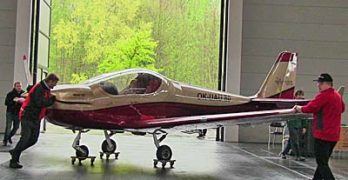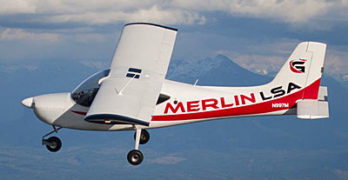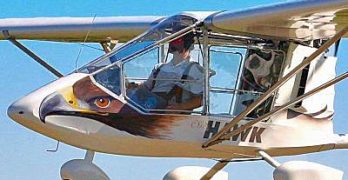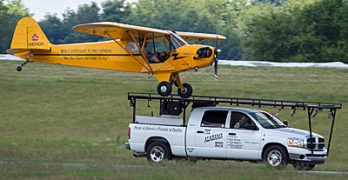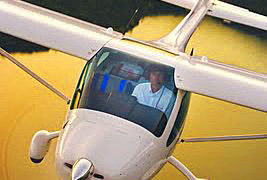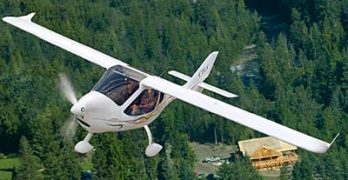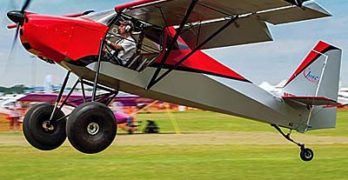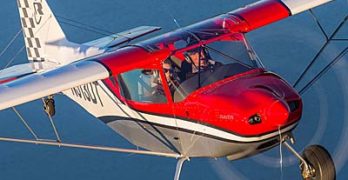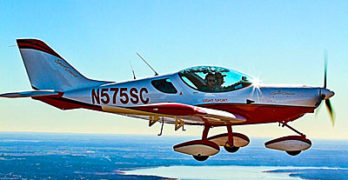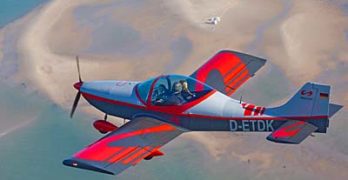The great show of Europe called Aero Friedrichshafen is about to begin. It starts officially tomorrow and runs through Saturday (April 20-23, 2016). I’ve lost count, but believe this is my 20th year of attending, far more than any other European show. As he worked to help exhibitors and manage the million details of his event, boss Roland Bosch said the event started in 1977, meaning next year would be its 40th, but… Aero alternated years from 1977 through 1991 (as do many European airshows). With the 1993 event it went annual, meaning this is the 31st Aero.
On Monday, the vast 11 halls of the Messe (the facility name) were largely empty but slowly becoming populated with airplanes. In all of the gymnasium-sized halls with their elegant curved wood roofs, workers assembled displays. In Halls B1, B2, and B3 — where the light aircraft I follow are concentrated — displays are more elaborate than anything we typically see at U.S.
Two More SLSA Makes 140!
Predictions of a great thinning of the herd… of a consolidation of LSA producers to a handful of leaders never came to pass. No wonder, when the new Special LSA acceptances keep piling up.
What I find quite fascinating is that the four newest SLSA were Made-in-American aircraft or seven of the last ten. The Yankees are coming on stronger after the Europeans owned the market for the first few years.
I have new SLSA airplane market share numbers for 2015 thanks to hours of work by my friend and LAMA associate, Jan Fridrich. With Sun ‘n Fun and Aero approaching I have simply been short of time to give such important info the attention it deserves. Yet, as soon as possible…
Meanwhile I am pleased to announce the latest SLSA. Welcome to Glasair’s Merlin LSA that we reported in this video with company president Nigel Mott.
AOPA crack reporter, Al Marsh reported Merlin LSA is priced at $149,950.
CGS Hawk Has Found a New Florida Home
In the beginning … the light aviation world was void and without form. Those were the earliest days of light powered aircraft that people could truly afford. I refer way back to the late 1970s following a period when hang gliders were the darlings of the affordable aviation world. Hang gliders evolved in various dimensions, among which was the addition of an engine to a previously unpowered type of flying machine.
In those formative years one man stood large. Not only a big man in physical form, he was big in stature and bold in his goals. Some readers already know to whom I refer — the always impressive and irrepressible Chuck Slusarczyk. History about him goes back far enough that much of it precedes the World Wide Web. The earliest articles about Chuck and his enterprise never made it into the digital universe but see this link for a number that did, including some videos.
American Legend’s Greg Koontz Truck Landing Show
In my years as a hang glider pilot — and for many friends who enjoy unpowered paragliders — the idea of what’s called a “top landing” is something of the holy grail. Such a feat can now be rather commonly achieved, especially by a slower flying paraglider, but is nonetheless quite thrilling to launch from a mountain and then land back on top of that mountain. This avoids the need to breakdown, drive back up, and set up for another launch but mainly it is just a terribly cool thing to do.
Still, landing a hang glider or paraglider back on top of the mountain is reasonably straightforward compared to landing an airplane atop a moving truck. Sure, you may have seen it done at airshows and perhaps you marveled at the skill involved. Yet I’m guessing that virtually no one reading this article has ever attempted the feat much less done so repeatedly … and, by the way, at an airshow with lots of people watching and cameras recording everything.
Remos Roars Back with GXiS; Aero 2016 Debut
Article updated March 9, 2016 — Skybound Aviation in Cape Girardeau, Missouri has been appointed the “exclusive resource” for Remos G3 and GX parts in the USA. The company operated by Glenn “Mac” McCallister and Bev Cleair is open for service 6.5 days a week (not Sunday mornings) and is also a dealer for Remos. Contact them at 573-833-0426 or email Mac.
In our 2014 report, you read that a well-known German supplier of Light-Sport Aircraft, Remos, fell from their high perch. The company became known to nearly all Americans when the U.S. importer, closely allied with the German producer, ran a series of full page ads in the USA’s biggest aviation magazines. It brought wide awareness but cost the company dearly. As their timing coincided with the global economic downturn, Remos stumbled badly and was forced to go through reorganization.
As reported, a new investor stepped up during the process and Remos has persevered.
Flight Design USA Forges Ahead with CTLSi
Breaking News … Recently Flight Design in Germany sent a letter to their dealers including this statement, “We have applied for a planned receivership which allows for reorganization of the company.” What does this mean?
Since Light-Sport Aircraft burst on the aviation scene in 2004, Flight Design built the largest fleet in the United States. Using internationally-accepted ASTM standards to good advantage, CT series aircraft also sold well in other countries. Flight Design USA president Tom Peghiny was the first ASTM Airplane Subcommittee chair for several years in the mid-2000s while Flight Design Germany’s Chief Technical Officer, Oliver Reinhardt served as overall F37 chair until very recently.
Parlaying their prowess in aircraft design, testing, and certification, Flight Design engineered an all-metal version of their carbon fiber CTLS, called MC, plus a four-seat certified aircraft design named C4, among other projects.
That may sound positive, but engineering-intensive projects require costlier talent and can consume boatloads of money.
SuperSTOL Gets Superpower with Titan’s 180 Horses
Article updated 2/16/16 — In a freshly-edited video (see at end), Just Aircraft key fellows Gary Schmidt and Troy Townsend provide extra comments and we add additional footage of SuperSTOL climbing strongly with the Titan.
Even before Continental Motors took over the former ECi, that company’s Titan engine has been turning heads. CubCrafters was first to this party, installing the 180-horsepower engine on their Cubalike LSA, demonstrating very short takeoff rolls before climbing steeply. Since then, quite a few other producers have embraced the potent engine and more are coming. This development is sufficiently interesting that I am at work on an article about three “divisions” of powerplants for LSA, light kits, and ultralights.
However, all other users of the Titan are unlike Just Aircraft’s SuperSTOL, which itself has turned many a head at airshow demonstrations. SuperSTOL was able to rivet pilots’ attention when it performed with the 100-horsepower Rotax 912, so imagine the neck-snapping twists that will occur when people get a chance to see how this moveable-slats airplane on tall, telescoping gear performs with 180 horses doing the pulling.
Newest Special LSA Is … Rans’ S-20 Raven
The world of Light-Sport Aircraft has matured in the sense that we no longer have an airplane or two or three every month being added to the SLSA List. That may sound like a “industry slowdown” to some folks but I don’t believe that’s an accurate assessment.
A more realistic view is that the feverish rush days of 2004-2006 are over. That means not as many new SLSA are being offered though the truth is many of those 137 aircraft never found a substantial market.
Indeed, our market share list of SLSA airplanes shows the top 20 brands represent better than 85% of all sales. Regretfully, our ranking shows only airplanes as we are unable to pull good data from FAA’s database for motorgliders, weight shift trikes, powered parachutes, and other “alternative” aircraft.
All that said, I am pleased to announce one of our most solid companies — Rans — continues to introduce new airplanes like their S-20 Raven and to qualify them to be accepted by FAA as a fully-manufactured Special Light-Sport Aircraft.
Learn to Fly and Have Fun. Is that Wrong?
Flying is serious. You can … well, perish, perish the thought. Of course, you are vastly more likely to die in a car or maybe even in your bathtub. We all know that. We also know that aviation has not earned an enviably good safety record by emphasizing pure fun. The “fun” part may be implied but is that a bit too dry if we hope to attract newcomers to aviation?
For many years a long while back I was involved with hang gliding. I ran a dealership and flight school in the mountains around Chattanooga, Tennessee. I want to tell you that folks who jump off mountains in hang gliders know how to have fun. OK, technically, you don’t “jump off” mountains — you “launch” — and while those pilots do have fun, they are zealous about safety. In the early days, way back in the ’70s, the sport suffered a rash of accidents but today you very rarely hear about a hang glider accident.
Breezer Gains EASA’s Restricted Type Certificate
A well-worn line is often repeated by those trying to gain approval for an aircraft. The line is typically employed referring to FAA Part 23 type certification because that regulation dictates massive documentation of design, testing, production systems, and more. It is often stated humorously but it’s quite serious.
“When the paperwork weighs more than the airplane, you’re done!” It means an impressive amount of documentation is required to get FAA’s blessing for a new Cessna-Cirrus-Diamond-Piper.
In recent news about the approval of a Light-Sport Aircraft by the European Aviation Safety Agency, Breezer lays claim to a fairly rare credential.
Breezer is only the fourth LSA I am aware of to achieve Restricted Type Certificate approval from EASA, the Europe Union equivalent to FAA. The first two were (in order) PS-28 Cruiser from Czech Sport Aircraft followed by the CTLS-ELA from Flight Design. Both were awarded at Aero 2012.
- « Previous Page
- 1
- 2
- 3
- 4
- …
- 52
- Next Page »


